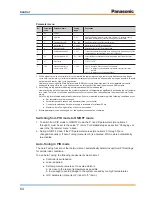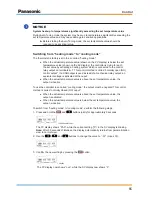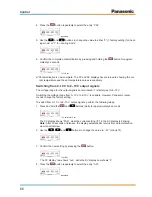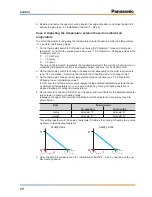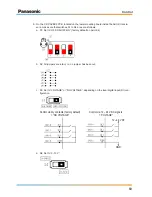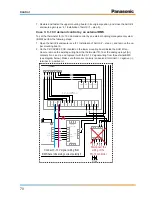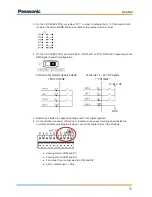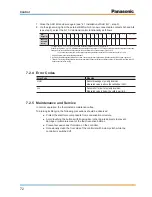
68
Control
6. Restore and fasten the upper mounting board in its original position, and close the AHU Kit
enclosure again (see “4.1 Installation of AHU Kit“ – step 5).
Case 2: Adjusting the temperature setpoint based on ambient air
temperature
To set the thermostat for adjusting the temperature setpoint based on ambient air temperature
(T
out
), perform the following steps:
1. On the thermostat, switch to PID mode by entering the “Parameter” menu and setting pa-
rameters P, I and D to the values given below (see “7.2.2 Operation – Changing values in the
‘Parameter’ menu”):
P
≠ 0 (not zero)
I
= 0 (zero)
D = 0 (zero)
The value of parameter P represents the required gradient for the cooling or heating curve in
modulating temperature control
(see diagrams below) and must not be equal to zero.
2. On the thermostat, switch to cooling or heating mode, depending on the AHU requirements
(see “7.2.2 Operation – Switching the controller from ‘heating mode’ to ‘cooling mode’”).
3. On the thermostat, change the set temperature value as required (see “7.2.2 Operation –
Changing the set temperature value”).
In this case, the set temperature value represents the adjusted temperature setpoint based
on ambient air temperature (T
set TR-16
), beyond which any cooling or heating operation is
stopped (heating or cooling limit temperature).
4. On the remote controller (CZ-RTC2), set the upper and lower limits for the adjusted tempera-
ture setpoint in cooling or heating mode.
Inbetween the upper and lower limit the setpoint will be adjusted in a linear way (see dia-
grams below).
Mode
Parameter name
For upper limit
For lower limit
Cooling
Parameter “1F”
Parameter “20”
Heating
Parameter “21”
Parameter “22”
This setting together with the value of parameter P defines the cooling or heating ramp curve
as shown in the following diagrams.
Cooling mode
1F
20
T
out
T
out
= T
set TR-16
+ P
T
out
≤ T
set TR-16
Heating mode
21
22
T
out
T
out
= T
set TR-16
– P
T
out
≥
T
set TR-16
5. Open the AHU Kit enclosure (see “4.1 Installation of AHU Kit“ – step 2), and remove the up-
per mounting board.











